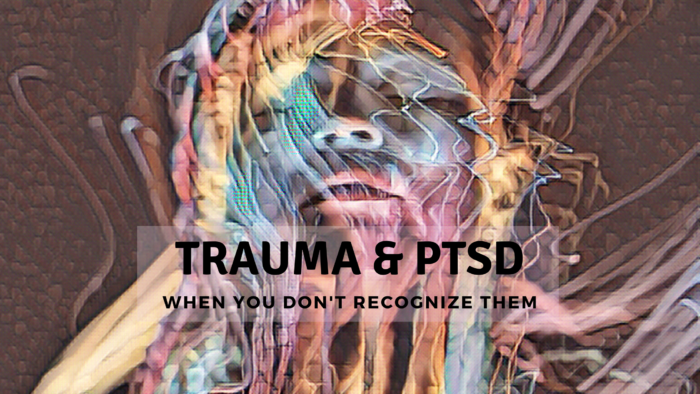By Donna Hoffmeyer
(original post on Medium)
And the truth is all Veterans pay with their lives. Some pay all at once, while others pay over a lifetime.~ JM Storm
One friend posted the quote above and it inspired this week’s blog. (Thank you, Kristy!)
A good chunk of the service members I had the privilege to take care of, dealt (and are dealing) with varying levels of trauma and PTSD. Some could continue to function with the aid of weekly therapy and medication, while others needed significantly more resources. However, at any level, family, friends, and co-workers often asked the same question. “Who is this person?”, “I don’t recognize this person.”, “Where is the Rockstar, I knew?”, or some similar statement. If I was given a dollar every time I was asked this question, I’d be a rich gal.
Here’s the thing, people may understand what the acronym for PTSD stands for, and they most likely can tell you it often occurs as the result of trauma. What people do not always understand is that trauma changes a person. Maybe it is not that they do not understand it; maybe it is more accurate to say they are not prepared for the drastic change; maybe it is a little of both.
And here’s another factor people do not take into consideration; untreated trauma is cumulative. For example, if a person joins the military as an escape from their traumatic childhood and has never processed and healed from that trauma, any trauma incurred in the military will just compound the severity of symptoms.
Let me tell you about Jake (names to protect privacy). Jake was considered the best of the best in his career field. His commander recognized it and thought he would be an outstanding asset as an instructor in their career field. Jake accepted the job and moved to his new assignment. Within a short time, the commander was concerned, as Jake was not showing up for work and occasionally showing up, in what appeared to be a very impaired state.
The situation grew evermore dire and the commander reached out for resources to help him. She reached out to our office for assistance with resources. It was during one of our many conversations, the commander stopped for a moment and said, “I don’t get this at all. He was top-notch; the epitome of a well-put-together service member, with an impeccable record. Yet, when I bring him out to instruct, I have not been able to use him at all. I don’t even recognize him.”
I commented, “Welcome to trauma and PTSD.” I was not trying to marginalize her thoughts with a witty comeback. They were valid thoughts. I was just validating the change she saw but did not understand.
It is a story repeated a thousand times, in a thousand different settings. Family, friends, and co-workers can see it but are in disbelief at what they are seeing. What happened to that happy-go-lucky person? The easygoing person? The go-to person? The organized person?
Another service member, Mike, told me during a conversation, his personality normally was pretty chill. Although he had an intense job as a JTAC (calls in for close air support), he could let a lot roll off his back. However, after his last deployment where his team was ambushed, he found himself worried about everything and became severely anxious over even the smallest course change. He and his wife both struggled with his new, more anxious, and forgetful, personality.
Cindy was a guardsman that experienced a traumatic event during deployment. When she came home, her civilian job noticed an enormous change in her and was very concerned. They reached out to her, supported her, and medically retired her from her federal job. Her military unit was the complete opposite. They “investigated” her and decided she was making it up. (I’ll validate her…she was not making it up.) She was eventually medically boarded by the military, but not before her already deteriorating mental health was further stressed.
The common thread in all of this? There was no understanding of how trauma remodeled them. Instead of asking why they were seeing this, they just responded to what they saw.
The result?
Isolation.
We all know this doesn’t help the situation at all. The traumatized person already barely recognizes themselves and feels a burden to others. It can become a burden they live with for the rest of their life or a burden they cannot live with…and just end it.
Many would agree living with the pain of trauma is worse than the ultimate sacrifice.
So, how do we break this cycle?
I wish I held that magic wand. What I can offer are a few thoughts from my experience working with many service members, commanders, family, and friends.
We have to develop preventative education.
We have enough knowledge of PTSD to be able to offer insight to close family and friends. Why not have family attend a sort of “pre-deployment briefing” to educate them about signs and symptoms of trauma; how to get help; how to work with the service member? Imagine the positive impact of early intervention.
We have to normalize trauma responses.
There is some of that in the works today. Look up Post Traumatic Growth and you will see lots of information on how to learn from your experience to grow. We need to continue in this direction. When we normalize the responses people are more apt to go for treatment sooner…or just go period. When we go the opposite way, we promote shame, which leads to isolation, and in some cases, even worse…a life taken too soon.
We have to hold space and respect that space.
The best advice I was ever given was by my close friend and many years recovered alcoholic. “Your bottom of the barrel is not their bottom of the barrel.” Very tough words to hear, but very true. We have to give them the space to heal, even when it means they are not in a place to start healing.
This leads me to my final couple of thoughts.
You cannot save them. (Keep reading until you burn this into your brain.)
My best friend has gone through more trauma than she or anyone should have had to endure. My heart breaks watching her struggles and it rejoices at her victories. There are many many times I have wanted to jump in, and like a mighty warrior, avenge her pain. (How’s that for dramatic?) Seriously, I don’t like to see her hurting. However, she and I came up with an analogy that reminds me of my place. We call it Mud and Rope. She is in the mud and I can throw every rope I have at her, but she has to be the one to pull herself out of the mud.
You cannot fix them. (Yes, also put this one on repeat.)
I’ll be honest, working with people that have experienced significant trauma can be exhausting; just ask any caregiver. However, the responses we observe and label as maladaptive (hypervigilant, tense, anxious, slow to trust, etc.…), were the same responses that kept them alive when they were in a threatening situation. These were appropriate responses for the time, but now their brain has determined this is the “go-to” response for every situation.
Remind yourself of this. They did not ask to experience trauma, it is what happened to them. It is not your responsibility to change their past; remind them they are broken; or tell them what they need to do to be better. It is your responsibility to support them so they can heal and have a quality future.
Trauma happens and in the military, the chances of experiencing some level of trauma are pretty high. However, the earlier the intervention, the higher chance of mitigating symptoms; returning to a productive life; and maybe even resembling the person you once knew.


